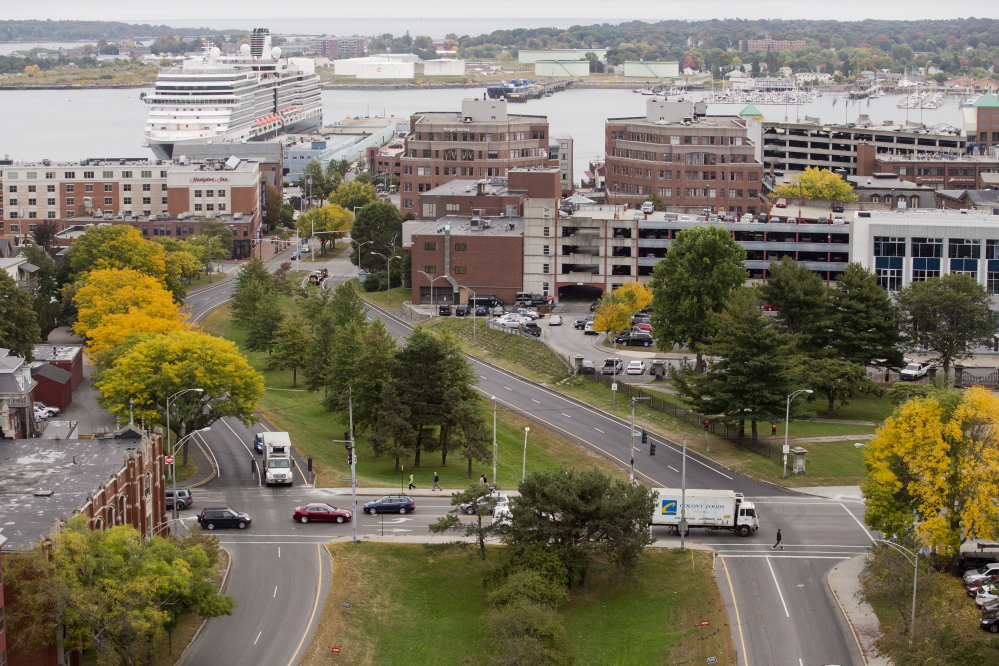Portland has an opportunity that few cities ever get: an opportunity to undo a terrible mistake.
More than 40 years ago, the city tore down a neighborhood and overbuilt a highway arterial between Marginal Way and Commercial Street. The city now has the chance to reclaim Franklin Street as an urban roadway that moves people whether they are in cars, on bicycles, in wheelchairs or on foot.
The new street would close the gap between the East End and downtown, open wasted land for development and restore part of Lincoln Park, which was gobbled up by the road builders. All this could be accomplished without reducing the capacity for moving cars on and off Interstate 295, if a complex array of interest groups can work together.
But in Portland, that’s a tall order. City residents have not been able to find consensus on land-use issues since the unsuccessful attempt to develop the Maine State Pier in 2007. Debates over development have wound up in court or on a referendum ballot in a series of fights that divide residents into angry camps. If that’s what happens with the Franklin Street redesign, it’s safe to assume that nothing will happen. And that would be a shame.
The plan presented to the public Wednesday has a lot to like. By removing the wasteful median strip and narrowing the right of way, the redesigned street could still accommodate the same number of cars, but there would also be room for bike lanes and sidewalks.
And by reconnecting streets that have been cut in half by Franklin, it would disperse east-west traffic instead of concentrating it on Congress Street and Cumberland Avenue, which makes for traffic backups at the intersections.
The redesign would also free up land that could be developed, a valuable commodity in a city with a serious shortage of affordable housing.
But it was also clear from the presentation that there could be a lot to quibble over, if that’s what one wants to do. The proposed redesign of intersection of Franklin and Marginal Way, for instance, is six lanes across and looks inhospitable to cyclists and walkers. Some commuters have already complained that a narrower roadway would make the city too hard to access by car, even though there would be no loss of capacity.
If this devolves into a fight between drivers and cyclists, residents and commuters, builders and anti-development activists, this project will bog down amid familiar arguments.
As Markos Miller, the Franklin Street committee chairman, said Wednesday, the challenge will be for everyone to look past the areas of conflict and focus on the points where people can agree. If Portlanders can do that, this project has a chance.
Copy the Story LinkSend questions/comments to the editors.



Success. Please wait for the page to reload. If the page does not reload within 5 seconds, please refresh the page.
Enter your email and password to access comments.
Hi, to comment on stories you must . This profile is in addition to your subscription and website login.
Already have a commenting profile? .
Invalid username/password.
Please check your email to confirm and complete your registration.
Only subscribers are eligible to post comments. Please subscribe or login first for digital access. Here’s why.
Use the form below to reset your password. When you've submitted your account email, we will send an email with a reset code.